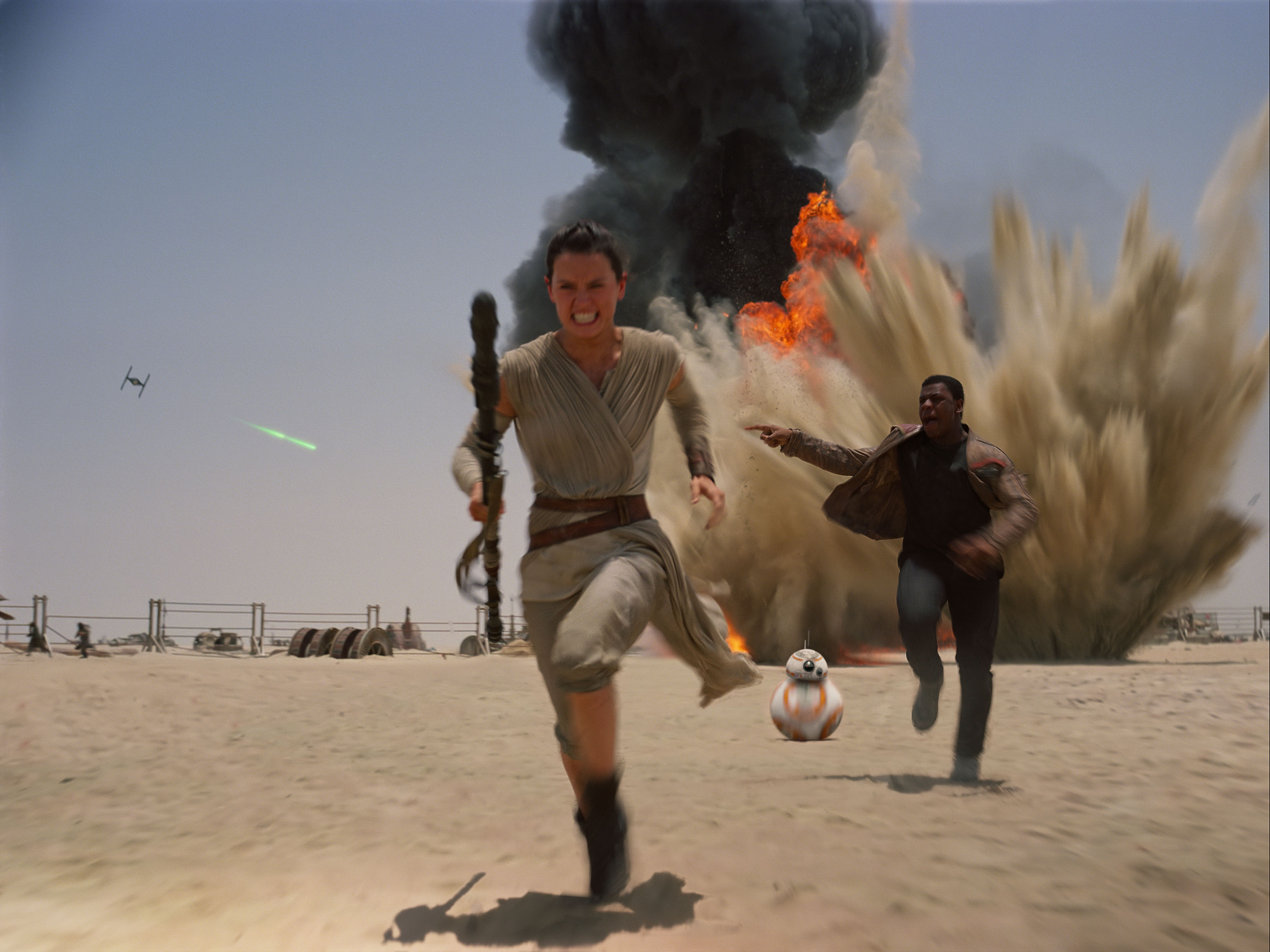WASHINGTON — How real is “Star Wars?” Not very, on an obvious level. But some of the science isn’t that far off; some has actually come true; and many of the larger questions the world of the film franchise raises resonate in our own time and place.
That’s the conclusion of a video series that asks several groups of Georgetown University professors to weigh in on the plausibility of the “Star Wars” saga as it pertains to their disciplines.
Business professor Robert Bies, for example, discusses Darth Vader’s leadership style, contrasting the Dark Side’s “unsustainable” use of fear and coercion versus the “lighter, brighter, more caring and collaborative” style of the Jedi.
Bioethicist James Giordano says the Jedi mind trick isn’t quite real, but “We can change our discourses, our narratives and perhaps even our postures and gestures to be able to influence others in a variety of different ways.”
Government and public policy professors Hans Noel and Jonathan Ladd look at the political angle of the saga. While Ladd says creator George Lucas “doesn’t know too much about how real politics works,” he adds that an outside perspective can offer “a nice way of prompting you to think about how things don’t work.”
Ladd says those living under the Empire face “a huge collective action problem.”
In Ladd’s words: “Most people, even if they wanted to fight off their government, it’s not in anyone’s individual (interest) to do that. Because unless you know you’re organized with a lot of other people and a lot of resources, you’re probably going to lose.”
And physics professor Patrick Johnson explains the mechanics of a lightsaber, adding that they’re not as far-fetched as they may seem.
Lightsabers are contained plasma streams, which exist. But whereas lightsabers use the Force, “in actual physics labs, we contain plasmas using larger electromagnetic fields,” Johnson says in the video.
Without such containment, he says, “Plasmas themselves would pass right through each other, and not make a very interesting lightsaber battle.” Nor, he adds, would a collision of plasmas make such a cool sound.
The results of getting hit with a plasma stream are pretty realistic though.
“It would definitely shear off a limb very, very cleanly.”
He adds that “this is actually quite healthy.” Such a wound would be immediately cauterized by the high heat, stopping the bleeding and lowering the risk of infection.
Johnson tells WTOP that he saw the new “The Force Awakens” film on opening night Thursday, and saw the previous film on its first night as well. “As an avid ‘Star Wars’ fan and a huge fan of science, I jumped at the chance” to make the videos, he adds.
He doesn’t want to give anything about the film away, but he says “I was very, very happy with the way the movie turned out.”
As for the science, Johnson says he has to see the film a few times to make that kind of judgment. But in general, he says, nothing really bothered him, and besides, he’s not the type to sit and stew in the middle of a movie because it gets a scientific fact wrong: “I am willing to suspend my disbelief for the sake of entertainment.”
That said, “I love it when the movies get the science right.” He gives “Interstellar” as a good example, and says the “Star Wars” films “explore some very interesting scientific themes.”
Perhaps most strikingly, the Kepler telescope several years ago found a planet that indeed has two suns, just like Luke Skywalker’s home planet of Tatooine.
Johnson says he hopes the videos will help spur an interest in science among kids, the same way TV and movies did for him.
“My first interest in science came from watching TV shows and movies, and thinking, ’I wonder how that works’,” Johnson says.
The “Star Wars” series helped pique Johnson’s interest, and so did — “The Simpsons”?
“It may seem silly … but there were things that would happen in there that I wondered about when I was young. The writers of ‘The Simpsons’ (were) very mathematical and scientific.”
Johnson often tries to use clips from “The Simpsons” in his own classes, including one depicting Principal Skinner citing “conservation of angular momentum!”
Lightsabers were a particular object of fascination, though.
“My brother and I would have lightsaber battles growing up — mine was just a flashlight with some plastic, but in my imagination I was picturing it as a beam of plasma.”
So, could lightsabers ever become real?
“If we could find a way to harness the Force, we could have lightsabers. But if we harness the force of electromagnetism, we could create a lightsaber.”
It might not take the Force, though: “When computers were first invented, they took up an entire room. And now, the device to contain plasmas takes up entire rooms. So maybe in 20 or 50 years, we’re gonna have little portable plasma creators in our pockets. And that’s what a lightsaber is.”
That has positives and negatives, as Johnson readily admits. “I certainly would like to have one for the fun of it,” although he says “there are a lot of ethical implications. I think that’s something that should be discussed before scientists go out and create them.”
Johnson calls the video series a great resource for kids, but says there are other Internet and YouTube sources kids could check out like MinutePhysics, SmarterEveryDay, Sixty Symbols. CGP Grey and The Green Brothers. “It’s a resource that I wish I had when I was young.”
And if you can’t get the information you need there, Johnson says, so much the better.
“Sometimes there isn’t a simple answer to a question. And that’s even more interesting.”
See Johnson’s videos:
You can see all the videos here.








